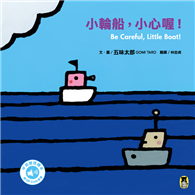| FindBook |
有 1 項符合
The Mystery of Edwin Drood的圖書 |
 |
The Mystery of Edwin Drood 作者:Charles Dickens 出版社:Enhanced E-Books 出版日期:2014-07-09 語言:英文 |
| 圖書館借閱 |
| 國家圖書館 | 全國圖書書目資訊網 | 國立公共資訊圖書館 | 電子書服務平台 | MetaCat 跨館整合查詢 |
| 臺北市立圖書館 | 新北市立圖書館 | 基隆市公共圖書館 | 桃園市立圖書館 | 新竹縣公共圖書館 |
| 苗栗縣立圖書館 | 臺中市立圖書館 | 彰化縣公共圖書館 | 南投縣文化局 | 雲林縣公共圖書館 |
| 嘉義縣圖書館 | 臺南市立圖書館 | 高雄市立圖書館 | 屏東縣公共圖書館 | 宜蘭縣公共圖書館 |
| 花蓮縣文化局 | 臺東縣文化處 |
|
|
‘The Mystery of Edwin Drood’ is the final novel by Charles Dickens. The novel was unfinished at the time of Dickens's death (9 June 1870) and his ending for it is unknown. Consequently, the identity of the murderer remains subject to debate.
Though the novel is named after the character Edwin Drood, the story focuses on Drood's uncle, choirmaster John Jasper, who is in love with his pupil, Rosa Bud. Miss Bud, Drood's fiancée, has also caught the eye of the high-spirited and hot-tempered Neville Landless, who comes from Ceylon with his twin sister, Helena. Landless and Drood take an instant dislike to one another. Drood later disappears under mysterious circumstances. The story is set in Cloisterham, a lightly disguised Rochester. Mr Crisparkle, for example, lives in a clergy house in Minor Canon Corner, which corresponds to a genuine address within the precincts of Rochester Cathedral, namely Minor Canon Row.
Supplying a conclusion to ‘The Mystery of Edwin Drood’ has occupied writers from the time of Dickens's death to the present day. The first three attempts to complete the story were undertaken by Americans. The first, by Robert Henry Newell, published under the pen name Orpheus C. Kerr in 1870, was as much a parody as a continuation, transplanting the story to the United States. It is a "burlesque" farce rather than a serious attempt to continue in the spirit of the original story.
The second ending was written by Henry Morford, a New York journalist. He traveled to Rochester with his wife and published the ending serially during his stay in England from 1871–1872. In this ending, Edwin Drood survives Jasper's murder attempt. Datchery is Bazzard in disguise, but Helena disguises herself as well to overhear Jasper's mumbling under the influence of opium. Entitled 'John Jasper's Secret: Sequel to Charles Dickens' 'Mystery of Edwin Drood,’ it was rumored to have been authored by Charles Dickens, Jr. and Wilkie Collins, despite Collins' disavowal.
The third attempt was perhaps the most unusual. In 1873, a young Vermont printer, Thomas James, published a version which he claimed had been literally 'ghost-written' by him channelling Dickens's spirit. A sensation was created, with several critics, including Arthur Conan Doyle, a spiritualist himself, praising this version, calling it similar in style to Dickens's work; and for several decades the James version of Edwin Drood was common in America.
Other Drood scholars disagree. John C. Walters "dismiss[ed it] with contempt", stating that the work "is self-condemned by its futility, illiteracy, and hideous American mannerisms; the mystery itself becomes a nightmare, and the solution only deepens the obscurity."
Two of the most recent of the posthumous collaborations are ‘The Mystery of Edwin Drood’ by Leon Garfield (1980) and ‘The Decoding of Edwin Drood’ (1980) by Charles Forsyte. There was also a humorous continuation by the Italian duo Fruttero & Lucentini entitled ‘The D Case.’
In January 1914, John Jasper (played by Frederick T. Harry) stood trial for the murder of Edwin Drood in London. The "trial" was organised by the Dickens Fellowship. G. K. Chesterton, best known for the Father Brown mystery stories, was the judge, while George Bernard Shaw was the foreman of the jury, made up of other authors. J. Cuming Walters, author of ‘The Complete Edwin Drood,’ led the prosecution, while Cecil Chesterton acted for the defense.
|











